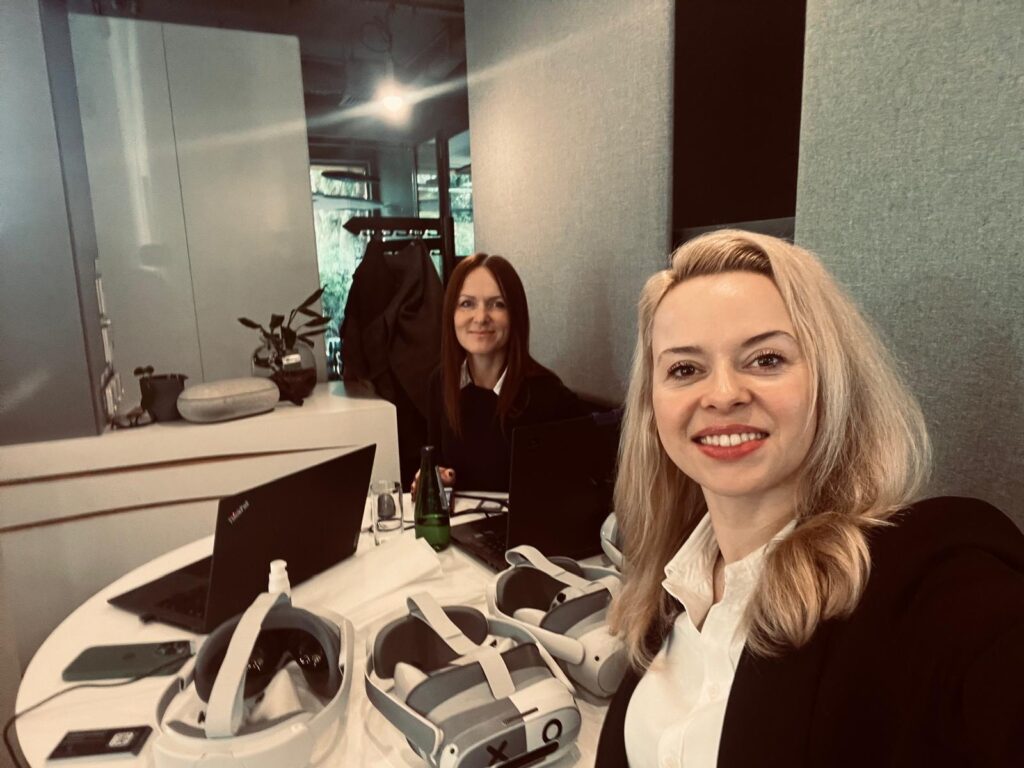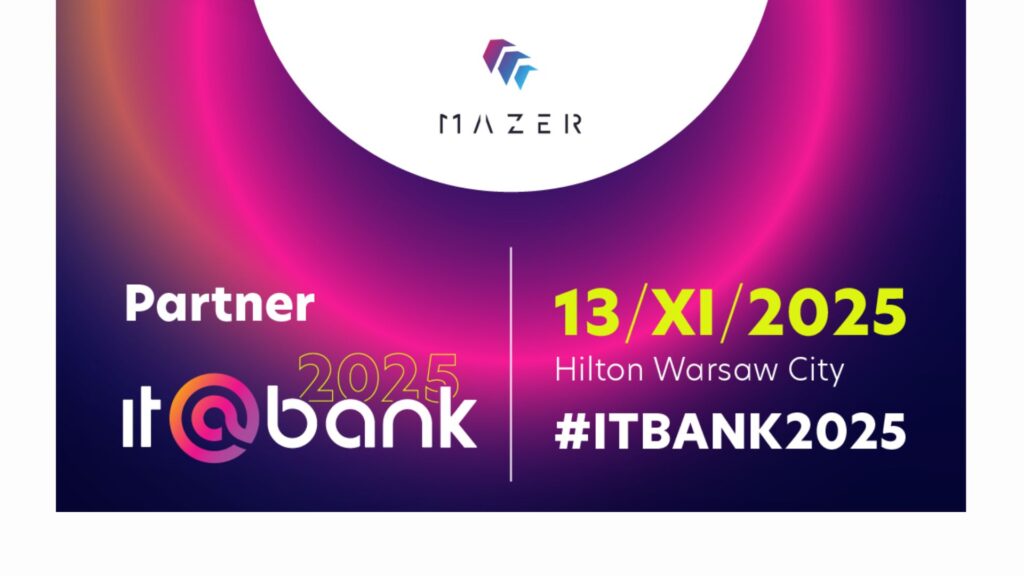VR Training ROI – Measuring the Real Returns on Immersive Learning
Table of Contents:
From soft skills and leadership development to compliance and technical procedures, immersive learning finds various applications across industries. But with every new investment comes a fundamental question: what’s the return? When implemented thoughtfully, VR training ROI goes beyond cost savings; it also delivers gains in productivity, engagement, retention, and risk reduction. Let’s break down the true value of VR training.
Key Takeaways:
- Beyond cost savings:
VR training ROI includes faster onboarding, fewer errors, stronger retention, higher engagement, and cultural benefits—not just financial efficiency. - Better than traditional training:
Immersive, hands-on scenarios create deeper cognitive impact and lasting behavior change compared to slides or videos. - Time and productivity gains:
Employees reach proficiency quicker, require less supervision, and free up managers for higher-value tasks. - Scalable and reusable:
Once developed, VR modules can be deployed thousands of times, cutting travel, classroom, and instructor costs. - Risk reduction:
Practicing high-stakes scenarios safely reduces costly incidents, errors, and downtime in industries like healthcare and manufacturing. - Engagement and retention:
Immersive VR boosts confidence, job satisfaction, and loyalty—helping to reduce turnover and attract top talent. - Measurable outcomes:
Metrics such as time-to-proficiency, error rates, employee feedback, and retraining frequency create a full picture of VR’s impact. - Clear competitive advantage:
Early adopters of VR training build smarter, more resilient workforces and strengthen their innovation culture.
What VR really delivers
Traditional training methods often rely on static formats (slides, videos, or in-person lectures) that don’t always translate into long-term behavior change. In contrast, VR allows learners to actively participate in realistic scenarios, making decisions, reacting to cues, and learning from their mistakes without real-world consequences.
The immersive nature of VR creates a deeper cognitive imprint. Research shows that learners retain more when trained in immersive environments compared to traditional methods. They’re also more engaged, because VR eliminates distractions and puts them at the center of the experience.
But what does this mean in practical terms for a business? Fewer repeat training sessions. Faster onboarding. Reduced human error. These are measurable cost reductions and productivity gains. And that’s the foundation of any strong VR training ROI analysis.
Tangible metrics that matter
One of the clearest indicators of ROI is time saved. Switching to VR allows many companies to reduce training times. This means employees reach proficiency faster and require less supervision, freeing up team leads and managers for other priorities. Multiply that across departments or locations, and the impact adds up fast.
Then there’s cost. While VR might seem expensive at first glance, especially when you factor in hardware, content development, and software licensing, many businesses find that the investment pays for itself in under a year. Why? Because the scalability of VR training drastically cuts long-term costs. Once a VR training module is created, it can be used thousands of times without needing a classroom, travel budget, or on-site trainer.
An effective VR training ROI analysis also considers operational costs saved by reducing errors or accidents. In high-risk industries like manufacturing, energy, or healthcare, training through VR significantly decreases the chances of costly – and potentially dangerous – mistakes.
Retention, engagement, and culture
There’s also the softer side of ROI – the human side. VR training improves employee engagement, which in turn impacts retention. Workers feel more confident when they’re trained in immersive environments.
And when companies invest in cutting-edge tools like VR, it sends a clear message about innovation and care for employee development. This cultural benefit, being perceived as forward-thinking and employee-focused, can help attract top talent and improve internal morale. While these elements are harder to quantify, they’re no less real in the context of VR training ROI.
Tracking VR training ROI
To truly understand VR training ROI, businesses should track not only financial metrics, but also:
- Time to proficiency
- Error rates pre- and post-training
- Employee feedback and confidence levels
- Retention and turnover rates
- Frequency of retraining or refreshers
By collecting data across these areas, they can create a full picture of impact; not just cost savings, but performance gains as well.
VR training is no longer experimental. Companies that invest in immersive learning today are building a smarter, faster, and more resilient workforce. And they’re doing it in a way that saves money, time, and future headaches. Whether you’re a small business or a global enterprise, VR offers real advantages: the returns are clear, and with the right implementation strategy, the results will speak for themselves.
Looking to elevate your VR training strategy? Be sure to check out our Mazer Trainer to save both money and resources.
What does VR training ROI include beyond cost savings?
ROI spans faster time to proficiency, higher engagement and knowledge retention, fewer errors and incidents, reduced retraining frequency, and cultural gains (employer brand, innovation signal, morale)—not just budget savings.
Why can VR deliver better outcomes than slides or videos?
VR places learners in realistic, decision-rich scenarios. Active practice creates deeper cognitive imprint, improves recall, and translates into behavior change—reducing repeat sessions and onboarding time.
Which metrics best demonstrate VR training ROI?
- Time to proficiency (before vs. after VR)
- Error/incident rates and rework
- Retraining frequency and duration
- Retention/turnover trends
- Learner feedback and confidence scores
Isn’t VR too expensive to justify? How do companies achieve payback?
While hardware and content require initial spend, reusable modules scale to thousands of sessions without travel, venues, or constant instructor time. Savings from faster onboarding and fewer errors often offset costs within months, depending on usage and risk profile.
How does VR reduce risk and operational costs in high-stakes environments?
VR lets teams practice rare or hazardous scenarios safely and repeatedly, cutting incident rates, downtime, and material waste in sectors like manufacturing, energy, and healthcare—key drivers of ROI.
Do “soft” benefits like engagement and culture really affect ROI?
Yes. Higher engagement improves retention of skills and employees, reducing recruiting and ramp costs. Signaling innovation strengthens employer brand and morale—factors that influence performance and turnover.
How should we set up measurement for VR training ROI?
Establish baselines (time, errors, costs) and define targets. Instrument modules for analytics, collect pre/post assessments and confidence scores, and tie results to business KPIs. Review quarterly to refine content and scale wins.
What’s the best way to start proving ROI with VR training?
Run a focused pilot on a high-impact use case (e.g., onboarding, safety-critical task). Track time-to-proficiency and error reduction, quantify avoided costs, gather learner feedback, then scale to adjacent roles and sites with a reusable content library.

Author: Rafał Siejca
Rafal has over twenty years of corporate experience, including roles at Millennium Bank, Comarch, and leading software teams at PZU, one of Europe’s largest insurance companies. As one of Poland’s few true VR experts with a decade of experience, he ensures timely, high-quality project delivery as CEO and CTO.










